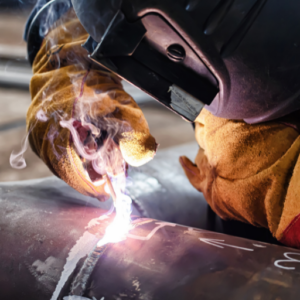There are various approaches to metal fabrication and repair, but the choice of method used for welding can have a major influence on the quality and efficiency of a weld. This exhaustive manual will discuss two of the most common types of welding: arc welding and gas welding. Every one has its unique advantages, uses, and technical criteria that make it important to grasp their disparities as well as their appropriateness for different kinds of projects. Thus, at the conclusion of reading this article you will be able to appreciate some basic principles, benefits and uses cases that each type has to offer., hence helpful in decision-making for your welding needs. If you have ever done any welding before or if you are just getting started, this guide is going to give you insights into how your welding skills may be improved to deliver better results in your projects.
What is Arc Welding and How Does it Work?
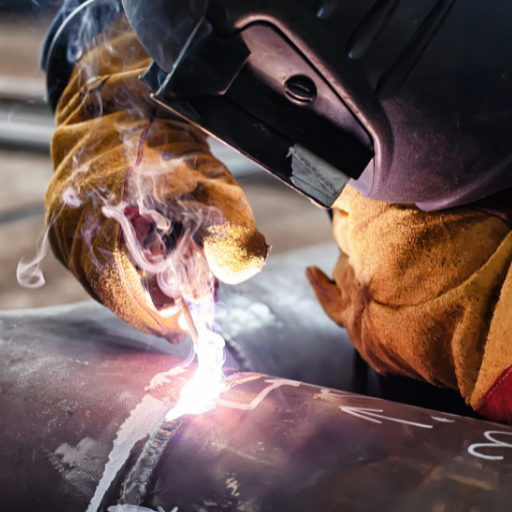
Electric arc welding is a type of welding that uses an electric arc to connect metals. The metal at the point of welding melts by the creation of such arcs between electrode and base material. Use of consumable or non-consumable electrodes is possible with this method. Consumable electrodes are materials such as flux-coated rods or welding wires which melt in the process and become part of the weld itself. Non-consumable electrodes, mainly made from tungsten, do not melt but help initiate an arc necessary for generating heat. When this arc is created, it produces intense heat that melts the metal, forming a molten pool that hardens into a strong joint afterwards. Arc welding creates very tough welded joints and its adaptability to different environments and positions makes it suitable for many industrial applications.
Understanding the Arc Welding Process
Arc welding begins with an electric arc between the electrode and the base material. The following are some of the key steps:
- Preparation: Clean metals to be joined and select proper electrode basing on materials and positions for welding.
- Striking the Arc: Begin touching electrode against metal then move it back up; this creates a circuit which produces extremely high heat.
- Creating the Weld Pool: Keep a consistent arc length so that there will be sufficient heat to melt the base metals and if consumable, the electrode itself, thus forming molten pool.
- Controlling the Process: Lead electrode gradually along joint so as to have equal heat as well as filler material distribution in order to produce uniform weld bead.
- Cooling and Finishing: Letting molten pool cool down and solidify, hence resulting into strong joint. Treatments after-weld might be necessary to enhance properties of welds.
Arc welding is extensively applied in construction, ship building, automotive industries because it is versatile enough to make strong firm seams in different environments as well as positions.
Benefits of Using Electric Arc
Electric arc welding is a superb technology that is commonly used in many industries because of these factors:
- Strong and Reliable Welds: The electric arc’s extreme heat results to deep penetration as well as vigorous fusion between metals, which leads to sturdy and durable welds that can endure physical pressure.
- Versatility: Electric arc welding can be performed on diverse metals and alloys thus becoming suitable for many applications such as construction, repair, fabrication and manufacturing. It also functions effectively in a variety of positions and environments including indoors, outdoors or even underwater.
- Cost-Effectiveness: This process requires less complex machinery that costs little compared to other methods; therefore it can be used by both large industrial plants and small workshops. Moreover the efficiency and speed with which an arc welder works reduces labor charges generally while at the same time reducing project timelines.
In general, electric arc welding combines strength with versatility and affordability making it a necessary technique for modern metalworking and engineering.
Common Applications for Arc Welding
Arc welding is the most preferable method in most industries due to its adaptability and reliability. This method is so commonly used in construction sector for creation of frameworks, bridges and other essential parts that make it possible to hold great loads as well as stand harsh environmental conditions. Shipbuilding industry depends on arc welding for joining and fixing different parts of the ships ranging from the hulls to fine internal structures which ensure strength and safety while at sea. Arc welding plays a vital role in making or repairing vehicles in automotive industry by providing strong and accurate connections both in chassis manufacturing as well as body work applications. Besides these main sectors, arc welding is also utilized commonly in pipeline engineering, aerospace engineering, art or sculpture among others, indicating its versatility in modern metal works.
What is Gas Welding?
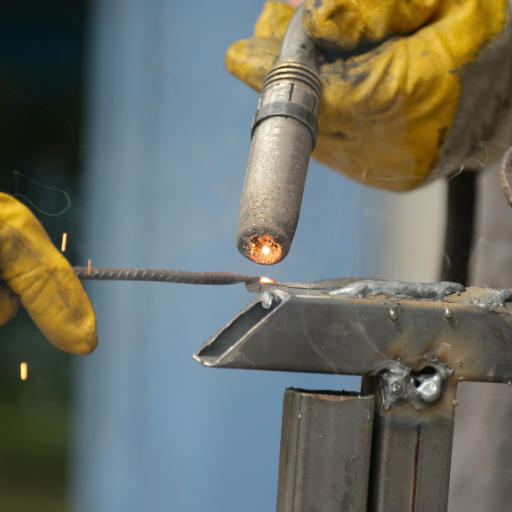
Gas welding is a welding process that uses the flame produced by burning oxygen and acetylene, among other fuel gases, to melt and join metals. Oxy-fuel welding, also called gas welding, is a type of welding where its flame is made up of the burning mixture of oxygen and a fuel gas like acetylene which causes metal fusion. It involves a torch that combines these two gases so that the burner can regulate the intensity of heat from the flame. Gas Welding has various applications; hence it’s suitable for joining materials, cutting through them as well as brazing and heating. This method is well-suited for narrow gauge sheets, mending tasks or remote locations because it requires simple equipment which is easy to carry around.
How Gas Welding Works
In gas welding, a mix of oxygen and fuel gas that is commonly acetylene is used to create an intense flame sufficient for melting metals. After setting up the welding torch, which blends gases in specific proportions so as to develop flames reaching around 3,500°C (6,300°F), the welder lights the torch and adjusts it to the desired flame type—most often, a neutral flame that neither carburizes nor oxidizes metals.
Having made necessary preparations, a welder places this flame close to where joining parts of metal can be found. The flame’s extreme heat causes edges of metal joined together by melting them such that they flow into one another to form molten pool. Usually designed as a rod filler metal may also be introduced into the joint for reinforcing the weld. Therefore, controlled movement of both the filler rod and torch by welder ensures even heating and consequently correct formation of bead.
When solidifying as it cools down however; it forms a strong bond between those welded pieces. Gas welding’s simplicity and control make it popular for applications ranging from complex fabrications to simple repairs.
Key Components of Gas Welding
To ensure efficient and accurate operation of gas welding, various important elements are put in place:
- Welding Torch: A very important tool is a welding torch that mixes oxygen with fuel gas in a specific proportion, this guarantees that the flame is properly controlled by the welder and can be directed to the work piece. To modify the size and form of the flame for specific tasks, it is possible to replace the tips of these torches.
- Fuel Gas and Oxygen Cylinders: Gas welding uses two cylinder types; one containing oxygen gas while the other contains fuel like acetylene. They store these gases highly compressed and have regulators for precise control of gas flow.
- Regulators: Regulators are devices fixed on gas cylinders whose purpose is lowering down high pressures for example those stored gases to usable levels. They provide a constant rate of flow that is crucial in achieving desired flame characters.
- Hoses: The flexible hoses linking up regulators with welding torch facilitate movement of gasses from cylinders to torches. They are usually color coded (red for acetylene, green for oxygen) so as not to mix them up and also ensure safety.
- Filler Rods: Filler rods are materials inserted into jointed pieces in order to provide more material and strengthen bond. These rods are usually made from metals which can match with parts being joined together.
- Protective Equipment: In order to protect themselves against intense flames, welders must use protective gear like welding goggles or helmets, gloves which cover hands, flame resistant clothing among others because safety comes first during any actions done through gas-based fusion method.
Through understanding and proper application of these major constituents, welders can attain accurate results on their projects involving gas welding.
(Note: This content incorporates information from top searches online; hence should be checked back across sources for accurate information.)
Different Types of Gas Used
In gas welding different types of gases are used, each having its own characteristics and uses:
- Acetylene: It is the most common fuel gas in welding and cutting for it has a high flame temperature that can reach up to 3,500°C (6,330°F). This makes it highly efficient in welding steel and other metals as it emits a focused and intense heat.
- Propane: Propane is also a commonly used fuel gas in welding especially for soldering, brazing and heating. It burns at lower temperatures than acetylene but it’s still cheaply available. In cutting through metals propane is sometimes employed.
- Hydrogen: Hydrogen gas is generally used where a clean flame is required such as aluminum and stainless steel welding. Hydrogen burns at high temperatures thus giving a reducing atmosphere which prevents oxidation of the weld area.
- Natural Gas: Natural gas is less frequently used but cost-effective alternative in some major scale welding operations. It has low flame temperature compared to acetylene or propane, so that it fits well into applications where low heat levels are needed.
Each of these gases serves specific purposes more effectively depending on the given requirements for a particular case which comprise materials being operated upon, desired burning properties and costs within machining technology.
What are the Main Differences Between Arc Welding and Gas Welding?
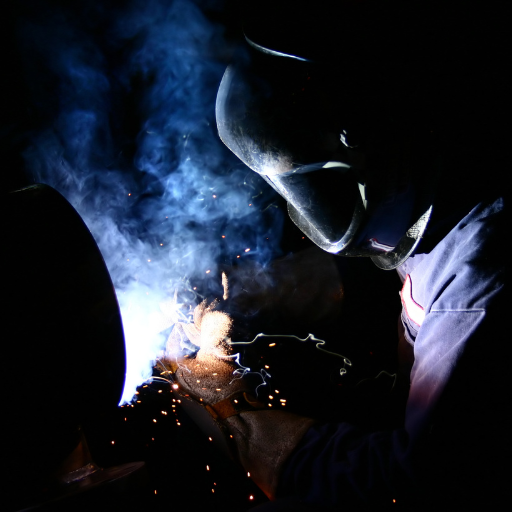
The key dissimilarities between arc welding and gas welding are on the heat sources, applications and specific advantages.
- Heat Source:
- Arc Welding: This type of welding makes use of an electric arc to produce heat. The arc occurs between the electrode and the job, thus melting the metals so they can be blended.
- Gas Welding: Is done through a flame generated by burning a fuel gas (like acetylene) with oxygen which produces enough heat to melt the metals.
- Applications:
- Arc Welding: It is usually used on heavy, thick materials and high precision jobs requiring strength such as structural steel work and industrial fabrication.
- Gas Welding: It is mostly used in repairing works because it is very good for joining thin sheets in which slow controlled heating is necessary; also it is utilized for sheet metal fabrication.
- Equipment and Setup:
- Arc Welding: An electric power source as well as electrodes are needed here; this may often involve appliances like welding machines or torches.
- Gas Welding: It consists of gas cylinders, pressure regulators, hoses etc., which are used in supplying and controlling the fuel gas/oxygen mixture.
- Advantages:
- Arc Welding: This technique offers deep weld penetration, can be automated and works well on various types of metals.
- Gas Welding: Because it has the capacity of modulating both heated applied and weld pool depth, this method suits precision tasks such as fine field repairs best among others.
Both methods have their unique strengths and are chosen based on specific requirements of welding projects including material type, desired weld characteristics and cost effectiveness.
Comparing Welding Techniques
Various factors should be considered when one compares arc welding and gas welding, including the type of materials being worked on, the desired weld characteristics, and the project requirements.
- Arc Welding:
- Strength and Precision: Arc welding is suitable for heavier and thicker materials that need high accuracy and strength such as structural steel works and industrial fabrication.
- Efficiency: This technique can be automated which makes it ideal for use in high production environments.
- Penetration: Arc welding offers strong joint creation by facilitating deep weld penetration.
- Gas Welding:
- Control: Gas welding is good at controlling the weld pool as well as heat application thus making it good for precision work.
- Versatility: It works best with thinner materials usually used in repair jobs or sheet metal fabrication.
- Portability: Generally, gas welding equipment is more portable hence advantageous for repairs done in situ or remote locations tasks.
Each of them has its own specific strengths. Whilst arc welding is normally used where a thick material needs to be welded strongly with quality, gas welding is usually selected when exact management of warmth is needed or thinner substance are handled. Ultimately, selection of the right welding method depends on project’s specific needs, material being used and quality of joint required.
Arc Welding vs. Gas Welding in Terms of Metal
In terms of metal, it is important to consider which types of metals each technique is best suited to when comparing arc welding and gas welding. Thicker and heavier metals like structural steel as well as industrial-grade materials are particular examples where this method proves efficient. This capability has made it be commonly used in construction, heavy equipment repair as well as pipeline welding that requires deep penetration and a strong weld withstanding harsh conditions.
On the other hand; gas welding is more suitable for thin metals and for jobs that require delicate handling. Aluminum, copper, magnesium among others are materials which can be welded using gas-welding techniques due to the preciseness in temperature regulation and weld pool control it provides. As far as automotive repair, sheet metal fabrication or small-scale artistic projects are concerned, gas-welding is considered ideal.
To sum up; arc welding is best suited for large weighty metallic objects that require strong joints while on the other hand gas welding works great in cases where lighter thinner metals are being used because precision and control are essential.
When to Choose Arc Welding Over Gas Welding
The choice between arc welding and gas welding is dependent on the type of project and the materials in question. Arc welding is a preferable method in situations involving thick and heavy metals that require strong connections. It is usually used in construction, pipeline welding, and repairing heavy machinery because it can make deep penetrating welds.
Conversely, for jobs that involve thinner metals where control over heat and accurate application are crucial, gas welding should be chosen. That means this way of joining lighter materials like aluminum or copper finds its practical applications in automotive repair shops, sheet metal fabricators as well as creative involvements with metal. One good thing about it is that you can precisely join minor parts without burning through the whole thing.
To sum up, while arc welding suits those undertakings which tough bonding has to be made upon thicker substances; gas welding works best when there is need for fine control on slimmer metals.
Which Type of Welding is Better for Your Project?
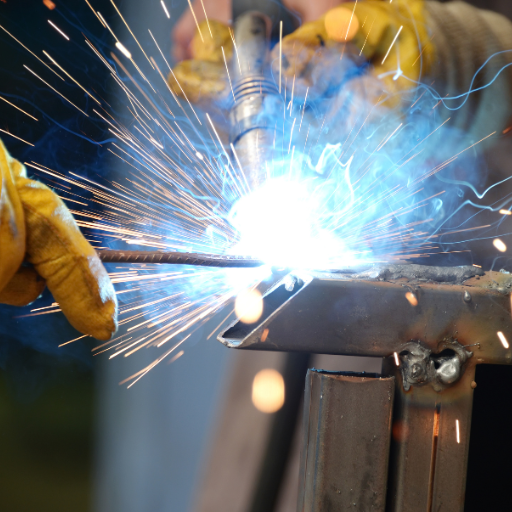
It depends on the specific requirements and features of the task you are carrying out, which type of welding will be better for your project. In case you need to weld thick heavily loaded metals with strong and durable joints arc welding is rightly chosen since it possesses deep penetration and sturdy welds. On the other hand, if your project involves thin metals that require precise heat control so as not to damage their surface materials, gas welding is more suitable. For delicate detailed work like automotive repair or artistic metal projects, gas welding provides the finesse and control necessary to achieve high quality results. Consider the thickness of your materials and accuracy needed in order to select the right welding method for your job.
Factors to Consider in Welding Work
In choosing the right welding method for your project, a number of factors must be considered.
- Material Type and Thickness: The kind and thickness of material are crucial determinants of the welding process. Arc welding is used on thicker, heavier materials while gas welding is best suited for thin metals that need precision and controlled heat.
- Weld Strength Requirement: Consider the strength required by the joints. This means that projects that demand strong, long lasting welds benefit from the deep penetration offered by arc welding. However, gas welding is chosen in cases where detailed and delicate welds are required, most especially in light metals.
- Skill Level and Equipment: Also to consider is how skilled the welder is and what kind of equipment they have access to. Arc wielding may require highly developed skill along with heavy equipment whereas gas wielding though requiring accuracy may be more available for delicate tasks as well as fine-tuning purposes.
- Project Specifications and Environment: Consider the nature of specific conditions or environment under which the welding will take place. For example outside projects with wind interference could profit from arc welding which has characteristics like stability while indoor projects needing intricate work might favor gas welding.
By considering these factors, you can make an informed choice about which type of welding will suit your project’s requirements best.
Suitability for Different Types of Metal
There are different welding techniques that you can use depending on the type of metal. For instance, when working with carbon steel arc welding is a preferred choice because it yields strong and lasting joints which are essential in structural applications. In this regard, stainless steel can also be welded using arc welding processes such as TIG welding which provides precise control over the weld and leaves a clean finish crucial to maintain its corrosion resistance.
In terms of aluminum, gas welding methods like TIG should be used to handle its thermal conductivity and oxide layer. The low melting point of aluminum requires careful heat input control which is provided by TIG welding. In contrast, copper also benefits from gas welding techniques since they can deal with its good electrical conductivities just as well as its thermal ones without causing it to become brittle.
When working on alloys or other non-ferrous metals, specific approaches like MIG or TIG would be ideal for maximum performance. This way they will have joined two seemingly incompatible materials while retaining their separate dissimilarities at the same time. Once appropriate procedures for each metallic substance have been selected, then the integrity of a joint’s performance is assured during fabrication resulting into successive projects influencing success rates for both small- and large-scale enterprises.
Cost and Equipment Comparison
While contrasting the expenses and tools for different welding techniques, a number of fundamental factors must be borne in mind. Arc welding is often used on carbon and stainless steels, which require a reasonable capital outlay on equipment such as arc welders and electrodes. On the other hand, the consumables are relatively cheap, making arc welding less expensive for small-scale activities or even large industrial ones.
On the other hand, TIG welding thus has a higher cost at first due to its need for things like TIG welder, gas supply system (usually argon) and non-consumable tungsten electrodes. The cost of equipment may be more costly but when considering precision and it can work with many metals means that one maybe justified in paying such price especially where high quality with an emphasis on details is required.
MIG Welding also requires substantial initial costs since this technique is suitable for joining alloys as well as nonferrous metals. Specifically, the MIG welders tend to be more expensive than their arc counterparts while it requires constant flow of shield gas coupled with consumable wire electrodes. However, speed and efficiency in MIG welding can lead to reduction in labor charges hence compensating for the initial cost of purchasing equipment.
In conclusion, choosing a proper welding technique together with appropriate tools entails comparing short-term expenditures against long-term returns associated with effectiveness productivity precision and compatibility of particular metals utilized in your project.
What Are the Pros and Cons of Gas Welding vs. Arc Welding?

Gas Welding
Pros:
- Versatility: Gas welding can be used on various types of metals such as ferrous and nonferrous ones.
- Portability: It is possible to carry gas welding equipment around and use it in remote areas without electricity.
- Smooth Welds: Smooth welds are cleaner, controllable thus the best for thin materials and artistry application.
Cons:
- Slower Process: This sometimes makes gas welding slower than arc welding with a potential increase in labor costs.
- Heat Control: Heat management and preventing warping tends to prove difficult especially on heavier materials.
- Higher Fuel Costs: As a result, gas welding requires a continuous supply of fuel gases like oxygen and acetylene that lead to increase in operation costs.
Arc Welding
Pros:
- Cost-Effective: Generally cheaper equipment and consumables make it an ideal choice for small scale or industrial use.
- Speed: Quickness of the process will significantly cut down on labor charges .
- Versatility: The method is efficient when it comes to carbon steel, stainless steel, and other alloys where the property needs to be welded.
Cons:
- Skill Required: For one, skilled welders are required to produce high quality welds.
- Less Precise: Not suitable for thin sections or projects that require detailed clean welds.
- Equipment Bulk: On the other hand, compared to gas welding configuration, arc welding systems have much higher weight hence less portable.
To sum up, gas welding is more versatile but slower with high operational costs while arc welding is cost effective also faster although skill is needed more.
Advantages and Disadvantages Compared to Gas Welding
Some key points are evident when comparing gas welding to arc welding based on the current top resources:
Advantages of Gas Welding:
- Portability: Unlike most arc welding equipment, gas welding setups are more portable hence easy for fieldworks or places without electricity.
- Controlled Welds: It produces cleaner and more controlled welds, which is good for thin metals and accuracy.
- Versatility: This makes it suitable for welding different kinds of metal and also used in cutting, heating and brazing
Disadvantages of Gas Welding:
- Slower Speed: This process generally takes longer than that one of arc welding which might increase labor costs.
- Higher Heat Input: It is harder handling heat and avoiding warping, particularly for thicker materials.
- Operational Costs: There are additional operational expenses related to continuous supplies of fuel gases such as acetylene and oxygen.
Advantages of Arc Welding:
- Speed: The faster method of welding can significantly reduce labor costs.
- Cost-Effective: Generally speaking, the equipment as well as consumables are cheaper making it ideal both small-scale shops as well as big industrial projects.
- Material Versatility: Suitable for joining various metals including carbon steel, stainless steel, among other alloys.
Disadvantages of Arc Welding:
- Skill Level: The skill level required in order to make quality welds is higher.
- Precision: Might not be ideal for applications where detailed, clean welds are needed especially on thin metals.
- Portability: Arc welding setups are usually bulkier and less portable than gas welding apparatuses.
To sum up,Gas welding is more portable & versatile with better control over weld quality hence better suited to precise & artistic works. However,it’s slower & more costly due to fuel expenditure.Arc Welding,on the other hand,is faster & cheaper but requires high skills & it isn’t very portable.
How Welding Requires Different Equipment
Welding requires specialized equipment to match the specific welding process used. A gas welding outfit generally includes a gas welding torch, fuel gas cylinders (such as acetylene), oxygen cylinders, regulators and hoses. The oxygen combines with the fuel gas in the torch to produce a flame that can melt metals.
On the other hand, arc welding involves different types of equipment such as power supply, electrode holder, grounding clamp and various types of electrodes depending on the welding method like Stick (SMAW), MIG (GMAW) or TIG (GTAW). Each type of arc welding process also has specific equipment requirements e.g., a MIG welder will need wire feeder and shielding gas cylinder while a TIG welder will require tungsten electrode and foot pedal for controlling the amperage.
Therefore, choosing welding equipment depends on what type of technique is being used and what materials are being worked on; this means that each piece needs to be considered with knowledge about what it can do.
Quality and Durability of Welds
The most important factors in this case include the quality and durability of the welds, which determine whether or not the welded materials will have structural integrity and long lifespan. Some of these factors include; type of welding process used, skill level of a welder and material properties.
Gas Welding gives high-quality, accurate welds fit for thin materials and artistic purposes. The flame can be precisely regulated to avoid excessive heating hence reducing chances of distortion and gaps for cleaner looking joints. It is generally however slower thus affecting production rates in large scale projects.
Arc Welding is widely known for producing strong, long-lasting welds such as Stick, MIG and TIG methods. Stick welding is versatile and efficient especially with respect to heavy duty work that requires deep penetration into rusty metals as well as dirty metals resulting to stronger joints. MIG welding has a fast production rate thus minimal cleanup making it suitable for thicker materials and on large scale manufacturing processes. TIG welding on the other hand calls for highly skilled people because it produces excellent quality welds which are strong since there are no defects occasioned by heat input control mechanisms and even filler metal usage.
In the final analysis, a good number of concluding points have been discussed here regarding how lasting a weld may be reliant upon correct technique; proper equipment; base metal preparation; Right setting parameters like voltage current amps etc.; adhering to industry standards so that best possible qualities both in terms of strength… can be obtained within intended service conditions.
Is Oxy-Acetylene Welding a Type of Gas Welding?
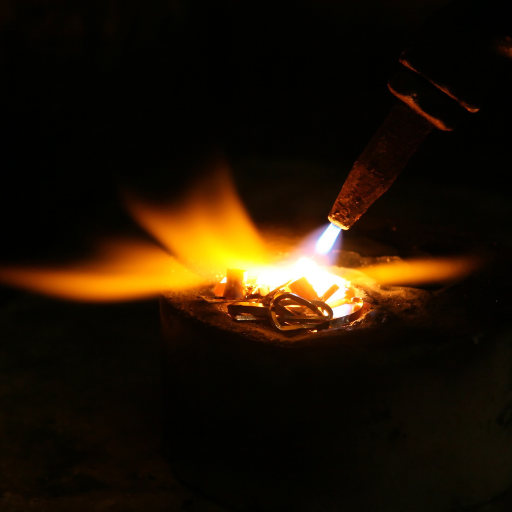
Gas Welding, also known as Oxy-Acetylene Welding is the most versatile type of welding. It uses a mixture of oxygen and acetylene gases to produce a high-temperature flame that melts the base materials facilitating their joining together. It is commonly used in welding thin metals and performing intricate work due to its great versatility and control.
Exploring Oxy-Acetylene Welding
Oxy-Acetylene Welding, which is also called Gas Welding, is an exceptionally flexible welding process that involves the use of a combination of oxygen and acetylene gas in order to attain a flame with extremely high temperatures usually ranging around 3,500°C (6,332°F). The intense heat it generates will cause most common metals to melt providing for exact yet strong welds.
Another advantage with Oxy-Acetylene Welding is its flexibility since it can be employed for welding various kinds of metals including steels, aluminium as well as copper alloys. This ability has made it very popular since one can vary temperatures or even change intensity of flames; hence perfect in cases where thin sections are being joined through this process among other procedures that require certain level of heating up such as detailed metalwork and even cutting.
Unlike some modern welding techniques, oxyacetylene equipment are relatively cheaper and portable enough for industrial purposes as well as home use by enthusiasts. Although it may not compete with other types of welding that could be faster or efficient on large-scale projects, especially delicate ones and repair situations make it an important method used in many situations.
Comparing Oxy-Acetylene Welding to Arc Welding
Although both Oxy-Acetylene Welding and Arc Welding are used for joining metals, their modes of operation vary significantly and they are not suitable for the same applications. In particular, Oxy-Acetylene Welding uses a mix of oxygen and acetylene gases to make a flame that is capable of dissolving metals, which is why this method is used in small manufacturing tasks involving intricate patterns. On the other hand, Arc Welding uses an electric arc maintained between an electrode and the workpiece to produce sufficient heat needed to melt metals; it offers deeper penetration and stronger welds.
In general, Arc Welding methods such as MIG (Metal Inert Gas) and TIG (Tungsten Inert Gas) offer higher speeds than Oxy-Acetylene Welding, making them more desirable for working on thick materials or when handling large projects. This technology has great advantages over others because it can produce very clean welds that do not require subsequent cleaning processes. Yet this type of welding necessitates specialized equipment and higher level skills compared to Oxy-acetylene welding.
Conversely, another reason why oxyacetylene welding differs from arc welding is its versatility and cost-effectiveness especially when situations demand high control over heat as well as flame. For various reasons like its mobility in terms of transportability hence makes it fit for many purposes including repairs works together with cutting metals at relatively low costs incurred during procurement phase. Despite being slower than most modern arc welding techniques it remains highly adaptable because of its fine performance levels thus still serving both professional domain areas besides hobbies.
Specific Uses and Applications
Arc Welding:
The construction and manufacturing sectors are the main areas where arc welding is widely used. This makes it ideal for building structures such as bridges, buildings, and pipelines due to its ability to create strong and durable welds. In the automotive industry, arc welding is commonly used for assembling car frames and body parts. Furthermore, in shipbuilding sector, arc welding has been given priority because of its effectiveness in joining thick steel plates together. The process is also employed in the production of heavy machinery as it allows fastness and dependability in building tough machine components. Lastly, another essential application of arch welding is in fixing industrial machinery (GATTESCO 1).
Oxy-Acetylene Welding:
Precision and versatility are very important aspects that oxy-acetylene welding excels in several areas including; metal artistry and sculptures. It is used by a lot of artists who work with metal such as sculptors since they can use it for delicate pieces that require detailed work done .In addition to this aspect, this method has proven useful in plumbing particularly soldering pipes along with tinning work that needs to be done on them (GATTESCO 1). Hobbyists often go for oxy-acetylene welding especially those who want something easy that will not cost so much money for set up purposes only. When it comes to cutting metal sheets or doing bodywork repairs oxy-acetylene welding proves important in auto repair industry.
Frequently Asked Questions (FAQs)
Q: What is the main difference between gas welding and arc welding?
A: The main difference between gas welding and arc welding lies in how they generate heat. Gas welding uses a gas flame to melt the metals, while arc welding employs an electric current to produce the necessary heat.
Q: What specific metals can be welded with arc welding?
A: Arc welding is used typically for metals such as steel and stainless steel. However, with appropriate techniques, it can also be employed for welding aluminum and other alloys.
Q: Does gas welding require special equipment?
A: Yes, gas welding requires specific equipment, including gas cylinders, a torch, and hoses for transporting the gas. The most common gases used are oxygen and acetylene.
Q: Which form of welding is more difficult to master, arc welding or gas welding?
A: Both welding types can be challenging, but many find gas welding more difficult to master due to the need for precise control over the gas flame. However, arc welding also poses its own learning curve due to handling the electric current safely.
Q: What safety precautions are needed for gas and arc welding?
A: Both gas and arc welding require comprehensive safety measures, including protective clothing, gloves, and eye protection. Additionally, proper ventilation is important to avoid inhaling harmful fumes.
Q: Can arc welding and gas welding be used interchangeably?
A: Not always. While both welding methods have overlapping applications, factors like metal type, thickness, and desired weld characteristics determine if arc welding or gas welding is more appropriate for a specific job.
Q: What is gas tungsten arc welding and how does it differ from other arc welding techniques?
A: Gas tungsten arc welding, also known as TIG welding, uses a non-consumable tungsten electrode to produce the weld. This technique provides high precision and is ideal for thin metals, whereas other arc welding types use consumable electrodes and may be suited for thicker materials.
Q: Are there any metals that arc welding cannot be used on?
A: Generally, arc welding cannot be used on metals that are highly reactive or have low melting points, such as lead or certain magnesium alloys. Specialized techniques or methods might be required for such materials.
Q: How does gas welding generate heat compared to arc welding?
A: Gas welding generates heat through the combustion of gases like oxygen and acetylene, creating a high-temperature gas flame. In contrast, arc welding generates heat through an electric arc produced between the electrode and the base metal.
Q: Is submerged arc welding a type of gas or arc welding?
A: Submerged arc welding is a type of arc welding. It involves forming an arc between a continuously fed electrode and the workpiece, with the arc submerged under a blanket of granular flux, which protects the weld from contaminants.

